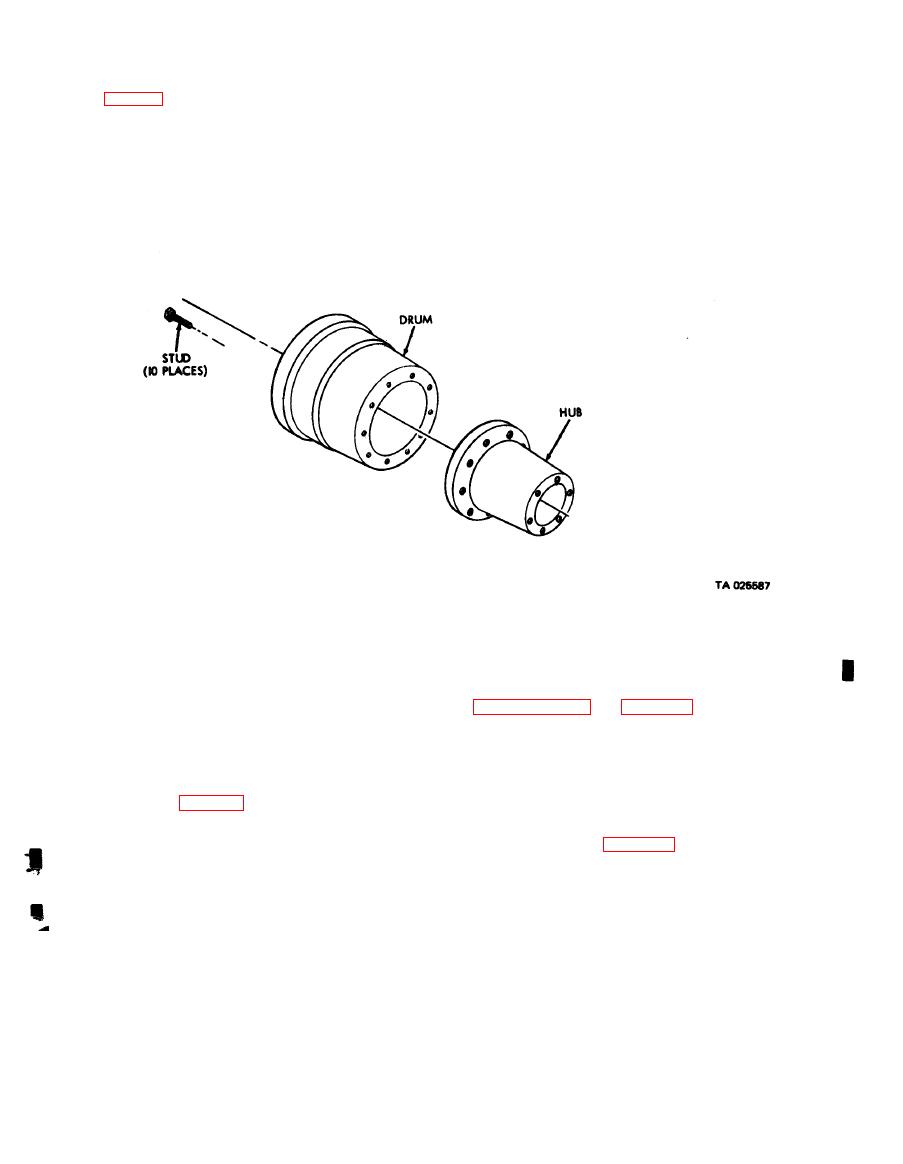
TM 9-2330-294-14
be reinstalled in the same holes. Mark relative
6-35. Disassembly
position of drum to hub.
b. Separte hub from drum by pressing ten studs
a. Position hub and drum on hub end. Use
out with arbor press.
suitable marker and number each wheel stud head
and adjust area of drum or hub so that studs can
inches, and should not be machined to a size
greater than 15.090 inches.
a. Cleaning. Clean hub and drum using dry
(2) Replace parts worn beyond limits specified
cleaning solvent type II (SD-2).
m paragraph 6-37 and table 6-3.
b. Inspection.
(3) When a damaged or broken wheel stud is
(1) Inspect inside of drum for pitting or scoring.
replaced, the stud on each side of it should be
(2) Inspect hub bearing surfaces for critical
replaced. This is necessary because the studs near
damage
the damaged or broken stud halve been carrying a
(3) Inspect hub and bearings for conformity to
heavier than normal load and may be weakened.
repair standards (table 6-3).
(4) Inspect wheel studs for damage.
(5) Inspect drum for out-of-round condition.
The repair standards (table 6-3) give the minimum,
(6) Inspect inside of drum for deep cracks.
maximum and critical clearance of new or rebuilt
This condition is tolerable only to 0.020 inch.
parts. They also give wear limits which indicate the
c. Repair.
p o i n t to which a part(s) may be worn before
(1) Drums that are scored, pitted or have deep
replacement. An asterisk (*)in the wear limits
cracks on the inner surface can be machined in
column indicates that the part(s) should be replaced
10 inch increments.
However, the refacing
when worn beyond the limits given in the sise and fit
he minor, since oversize brake linings are not
of new parts column. The letter (L) indicates loose
available. The inside diameter of a new drum is 15
fit. The letter (T) indicates tight fit.
Change 2

